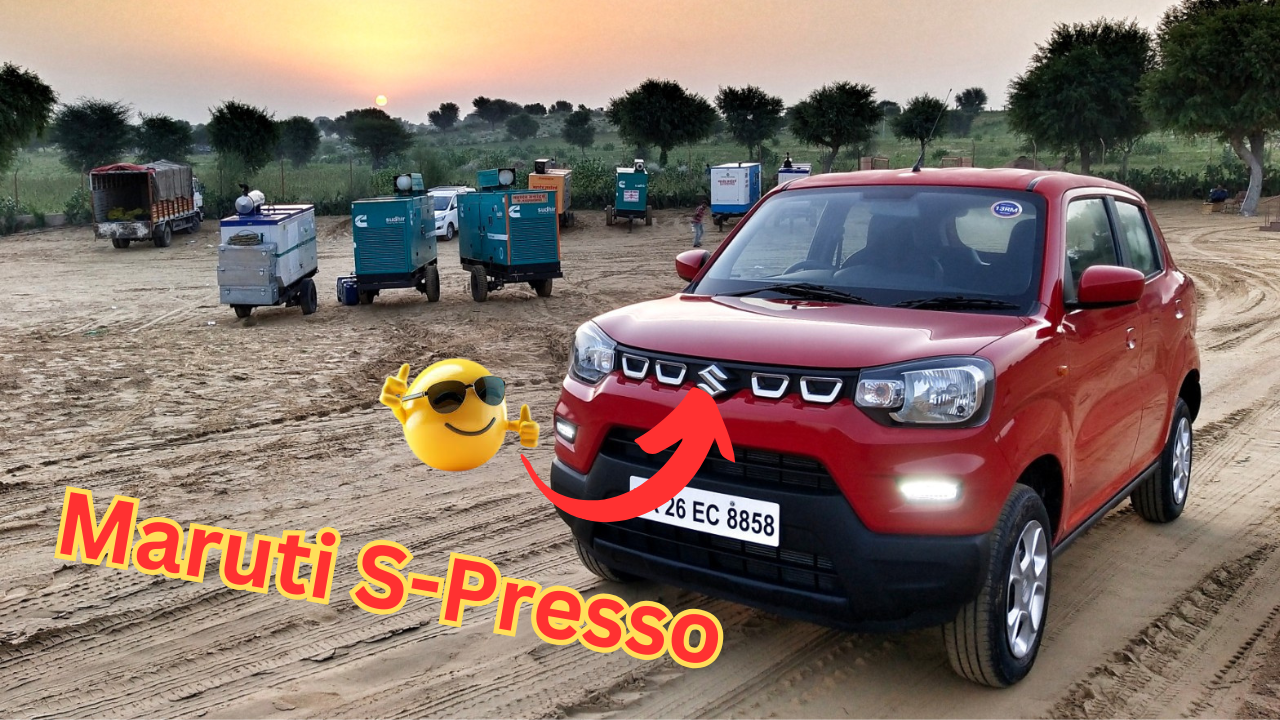Introduction
In the ever-evolving landscape of the automobile industry, compact cars have always been a popular choice for budget-conscious buyers. Two such notable names in the affordable segment are the Maruti S-Presso and the Tata Nano. While the Tata Nano was introduced as the world’s cheapest car, the Maruti S-Presso comes with the branding of a micro-SUV. The question remains: how do these two small yet practical cars compare in terms of design, features, performance, and overall value for money?
Exterior Looks: Aesthetics and Road Presence
One of the most significant differences between the two cars is their exterior design. The Tata Nano, launched in 2008, was aimed at providing an economical alternative to two-wheelers. Its compact, almost toy-like design with minimalistic features was unique but not necessarily appealing to all. The small size, round headlights, and a short hood made it look unconventional, yet it served its purpose as a city car.
On the other hand, the Maruti S-Presso, launched in 2019, takes a different approach. It aims to deliver a bold, SUV-inspired stance, even though it belongs to the compact segment. Higher ground clearance, a boxier structure, and aggressive front grille make the S-Presso more appealing than the Nano. The car’s tall-boy design gives it a commanding view of the road, something the Nano lacked.
Interior Comfort and Features
While both cars target the budget-friendly audience, they differ in terms of interior features and comfort levels.
Tata Nano Interior:
- Basic interior design
- Minimal dashboard layout
- Small but functional digital instrument cluster
- No power steering in early models
- Limited space due to compact dimensions
- No air conditioning in base models
Maruti S-Presso Interior:
- A more stylish dashboard with a central-mounted instrument cluster
- 7-inch touchscreen infotainment system with Apple CarPlay and Android Auto
- Power windows and keyless entry in higher variants
- More cabin space compared to Nano
- Higher seating position, providing better visibility
- Better overall build quality
From a comfort perspective, the S-Presso clearly takes the lead with its better ergonomics, infotainment system, and seating comfort. The Nano, while functional, had very basic interiors that lacked modern-day features.
Engine and Performance
The performance of a compact car matters, especially in urban settings where quick maneuverability and efficiency are key factors.
Tata Nano Engine & Performance:
- 624cc, 2-cylinder petrol engine
- Maximum Power: 38 PS
- Torque: 51 Nm
- 4-speed manual transmission and AMT option
- Mileage: 22-25 km/l
Maruti S-Presso Engine & Performance:
- 998cc, 3-cylinder petrol engine (K10B)
- Maximum Power: 67 PS
- Torque: 90 Nm
- 5-speed manual transmission and AMT option
- Mileage: 21-22 km/l
The Maruti S-Presso outperforms the Tata Nano in terms of power and torque, making it more suitable for highway drives as well. The Nano’s underpowered engine makes it ideal only for city commutes, while the S-Presso offers a better balance of city and highway usability.
Safety Features
Safety has been a growing concern for budget cars, and both the Tata Nano and Maruti S-Presso take different approaches.
Tata Nano Safety:
- No airbags in early models
- Basic safety features like seat belts
- No ABS or electronic safety aids
- Weak crash test ratings
Maruti S-Presso Safety:
- Dual front airbags (higher variants)
- ABS with EBD
- Reverse parking sensors
- Better structural integrity than Nano
- Meets updated safety norms
The Maruti S-Presso is significantly safer than the Nano, with modern safety features that were absent in the Nano’s design.
Price and Affordability
One of the biggest selling points of the Tata Nano was its price. It was launched at around ₹1 lakh, making it the cheapest car in the world. However, due to rising costs and lower demand, it was eventually discontinued.
The Maruti S-Presso, in contrast, starts at around ₹4 lakh (ex-showroom), making it more expensive but justified due to its additional features, safety, and performance.
Fuel Efficiency & Maintenance
The Tata Nano had one of the highest fuel efficiency figures in its category, achieving 25 km/l under ideal conditions. The S-Presso delivers around 21-22 km/l, which is lower but still competitive.
When it comes to maintenance, both cars have low service costs, but the S-Presso, being a Maruti, has the advantage of better service network and availability of spare parts.
Driving Experience
The driving experience between these two vehicles is vastly different.
- Tata Nano: Small turning radius, making it perfect for city traffic but lacks highway stability.
- Maruti S-Presso: More refined engine, better ground clearance, and more balanced performance both in city and highway conditions.
Verdict: Which One is Better?
If we compare the Tata Nano and Maruti S-Presso side by side, the Nano wins in affordability and fuel efficiency, but S-Presso takes the lead in every other aspect—design, comfort, performance, safety, and features.
| Feature | Tata Nano | Maruti S-Presso |
|---|---|---|
| Looks | Basic & quirky | SUV-inspired, stylish |
| Interior | Minimalistic, outdated | Modern, tech-savvy |
| Engine Power | 38 PS | 67 PS |
| Safety | Poor | Better safety features |
| Fuel Economy | 25 km/l | 21-22 km/l |
| Price | ₹1-2 lakh (discontinued) | ₹4-6 lakh |
Final Thoughts
The Tata Nano was an ambitious project that unfortunately did not sustain in the long run due to market preferences and safety concerns. The Maruti S-Presso, on the other hand, offers a stronger package in today’s scenario with its modern design, better features, and enhanced performance. If you’re looking for a budget-friendly car that offers more value, the S-Presso is the clear winner in this battle.
However, for those who appreciate the Nano’s simplicity, affordability, and uniqueness, it remains an iconic car in India’s automotive history.













